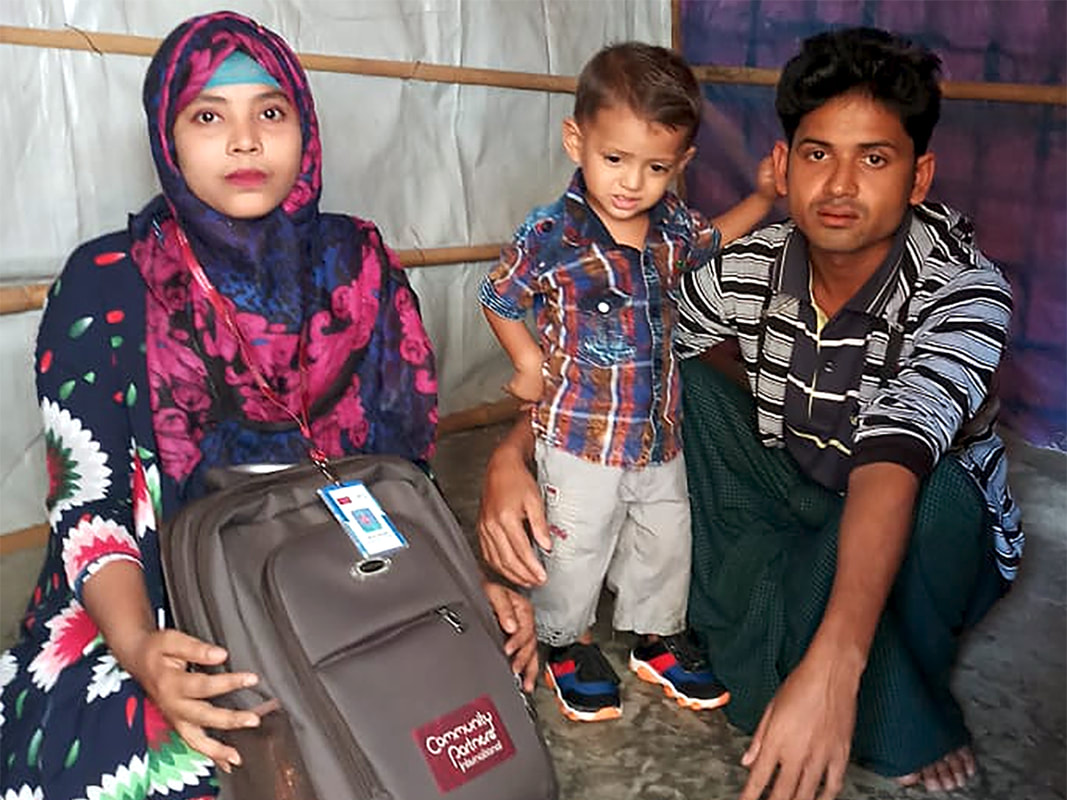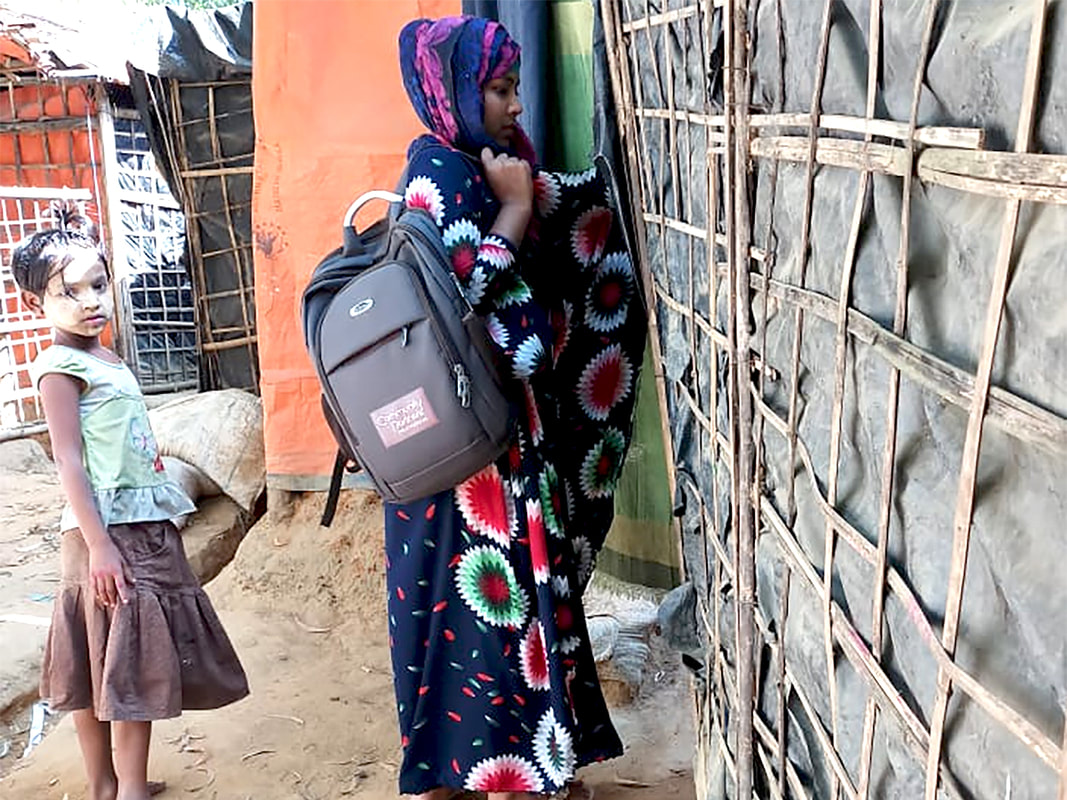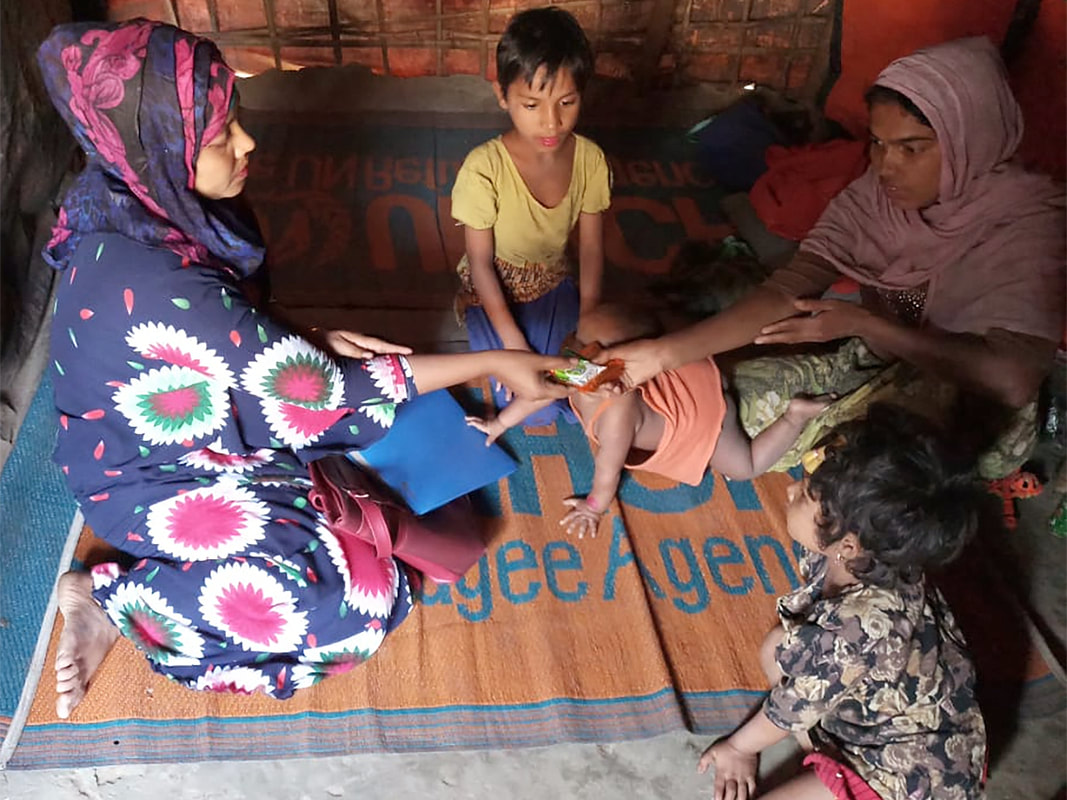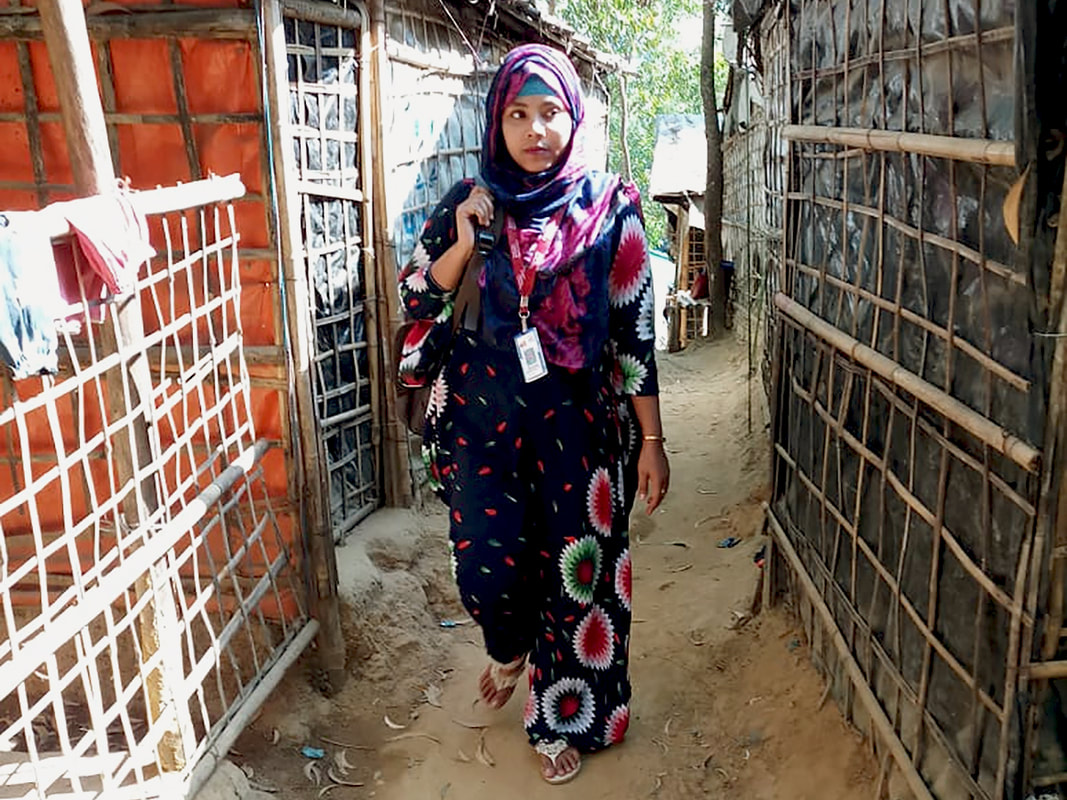|
Shomshida lives in the world’s largest and most densely populated refugee camp, Kutupalong, in Cox’s Bazar, Bangladesh. Kutupalong is currently home to more than 600,000 Rohingya refugees from Rakhine State. Myanmar. She shares her small shelter, a rickety structure of bamboo and tarpaulin, with her husband and two-year old son. In late August 2017, she fled the violence in Rakhine State with her extended family. They walked for 15 days through jungle and across rivers, eventually reaching the border and crossing into Bangladesh. Her elderly father was unable to walk so they carried him throughout the arduous journey. When Shomshida reached Bangladesh, relief quickly turned to worry as she wondered how the family would survive without food or shelter. They spent a month living in open fields, receiving some basic support from the Government of Bangladesh and local and international relief organizations. But there were no latrines or proper bathing facilities, so they moved to the rapidly expanding Kutupalong camp as soon as they could. Back in her hometown in Rakhine State, Shomshida was an active member of her community, she had worked for a period as a school teacher, and then joined an international aid organization for several years to assist with a therapeutic feeding program to address childhood malnutrition in her region. On her arrival in Kutupalong refugee camp, Shomshida began to look for ways that she could contribute usefully to her community. “I wanted to help our community in this time of crisis. To help prevent disease, improve hygiene and manage stress,” she says. In April 2018, Shomshida became one of 80 Community Health Volunteers (CHVs) in Cox’s Bazar supported by Community Partners International (CPI). Trained, equipped and supported by CPI, this network of CHVs are a crucial link in the chain of health in Cox’s Bazar. Refugees themselves, and embedded in the community, they travel from house to house in their neighborhoods, educating households on how to stay healthy, helping them to understand the health services available, distributing health and hygiene supplies, monitoring health and referring those in need of care to suitable health facilities. Through the CHV network, CPI is supporting the Rohingya refugee population to strengthen community capacity, self-sufficiency and resilience in the face of an uncertain future. In her CHV role, Shomshida heads out each day to visit households in her neighborhood catchment area. In total she covers 100 households and around 5,000 people. “At first, it was difficult to gain people’s trust,” she says, “But my supervisor helped me and it became easier over time.” All CHVs receive pre-service and in-service training from CPI to help them carry out their roles. “One of the most useful parts of our training has been prenatal care,” Shomshida says. “A lot of the pregnant women here do not fully understand the need for care during pregnancy. We encourage and support them to get prenatal care. We are also trained to spot warning signs in pregnancy and to refer pregnant women for emergency care if needed.” Shomshida encounters a wide variety of health needs in the camps. “Diarrhea is the most common health problem that we see, and also women in the late stages of pregnancy. We help to refer them to an appropriate health facility where they can get care.” For cases of diarrhea, CHVs also distribute water filters, oral rehydration salts and zinc tablets to help with prevention and treatment. Shomshida attributes the number of cases of diarrhea to water, hygiene sanitation (WASH) issues. “Some tube wells are located too close to latrine pits and that can spread disease.” During her household visits, Shomshida trains families in good hygiene practices, gives handwashing demonstrations, and distributes soap. There are also cultural aspects which can be barriers to health. “When we visit to discuss family planning, we can only meet with women, and not their husbands. Ideally, we need to meet with both,” Shomshida says. “I would like to see more family planning services provided directly to households here through the CHV network.” Shomshida is unequivocal about the value of the CPI-supported CHVs. “The community is vulnerable and the CHVs are very important because we are available at night and every day of the week. If there is a health emergency at times when other health facilities are closed, for instance at night, we can respond and help people in need. I feel very good to be able to help my own community. The best thing is to be able to reach out to anyone who needs us.” Shomshida emphasizes the value of investing in community members like her as an important resource for the future. “All of the things I have learnt as a CHV will be helpful for me. I will continue to serve the community here in Cox’s Bazar using my experience but also if we can safely return to Rakhine State.” In June 2018, Shomshida was promoted to Assistant Supervisor and now assists the CHV Supervisor to oversee all 80 CHVs who cover a catchment area of 9,600 households. She provides support and assistance to each team leader and also covers their duties when they are unavailable. Shomshida is one of three women promoted to leadership roles within CPI's CHV network.
For Shomshida and the estimated one million Rohingya refugees sheltering in Cox’s Bazar, the future remains uncertain. “I don’t think we will be able to return safely and securely to Rakhine State any time soon. It will take a long time.” Comments are closed.
|
AuthorCPI Admin Archives
July 2024
Categories
All
|
|
|
COMMUNITY PARTNERS INTERNATIONAL
580 California St Fl 16, Ste 1658, San Francisco, CA 94104-1068, USA [email protected] +1 510 225 9676 We are a registered nonprofit 501(c)(3) Public Charity. TAX ID 94-3375666 |
©
Community Partners International





 RSS Feed
RSS Feed
